Related Research Articles

The American Bar Association (ABA) is a voluntary bar association of lawyers and law students; it is not specific to any jurisdiction in the United States. Founded in 1878, the ABA's stated activities are the setting of academic standards for law schools, and the formulation of model ethical codes related to the legal profession. As of fiscal year 2017, the ABA had 194,000 dues-paying members, constituting approximately 14.4% of American attorneys. In 1979, half of all lawyers in the U.S. were members of the ABA. The organization's national headquarters are in Chicago, Illinois, and it also maintains a significant branch office in Washington, D.C.
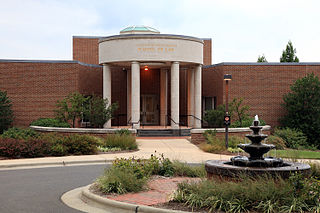
The University of North Carolina School of Law is the law school of the University of North Carolina at Chapel Hill. Established in 1845, Carolina Law is among the oldest law schools in the United States and is the oldest law school in North Carolina.
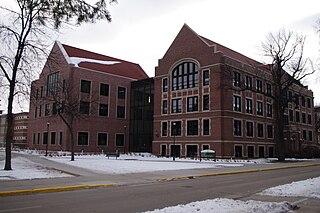
The University of North Dakota School of Law is located in Grand Forks, North Dakota at the University of North Dakota (UND) and is the only law school in North Dakota. It was established in 1899. The law school is home to approximately 240 students and has more than 3,000 alumni. It has one of the smallest student populations among the American Bar Association accredited law schools.
The Valparaiso University Law School was the law school of Valparaiso University, a private university in Valparaiso, Indiana. Founded in 1879, the school was accredited by the American Bar Association in 1929 and admitted to the Association of American Law Schools in 1930. In October 2016, the ABA censured the school for admitting applicants who did not appear capable of satisfactorily completing the school's program of legal education and being admitted to the bar. One year later, the school suspended admissions and shut down after the last class graduated in 2020.

Mary Hall was the first female lawyer in Connecticut, and also a poet, a suffragist, and a philanthropist. In 1882, the Connecticut Supreme Court of Errors' decision to allow Hall to be admitted to the Connecticut Bar was the first judicial decision in the nation to hold that women were permitted to practice law.
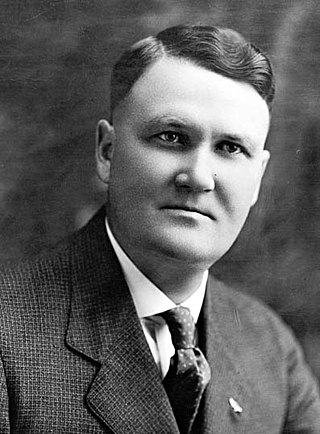
Olger Burton Burtness was a U.S. Representative from North Dakota and a North Dakota District Court Judge.

The University of South Dakota School of Law also known as University of South Dakota Knudson School of Law or USD Law in Vermillion, South Dakota, United States, is a professional school of the University of South Dakota and the only law school in the state of South Dakota. Established in 1901, by U.S. Ambassador Bartlett Tripp and U.S. Senator Thomas Sterling. The law school is home to approximately 168 students and has more than 3,000 alumni. With 168 J.D. candidates, it is currently the second-smallest law school and smallest public law school student population among the American Bar Association accredited law schools.
Howard University School of Law is the law school of Howard University, a private, federally chartered historically black research university in Washington, D.C. It is one of the oldest law schools in the country and the oldest historically black law school in the United States.
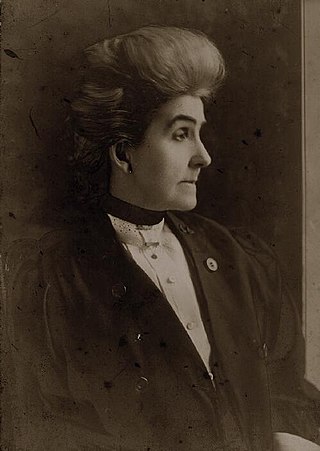
Phoebe Wilson Couzins was one of the first female lawyers in the United States. She was the second woman to serve as a licensed attorney in Missouri and the third or fourth to be a licensed attorney in the United States. She was the first woman admitted to the Missouri and Utah bars, and was also admitted to the Kansas and Dakota Territory bars. She was the first female appointed to the U.S. Marshal service. After her career in law she played an active part in the Suffrage movement.

Mary Madden Lilly was a Progressive era activist who had a prominent role in New York City's social reform movements during the last decades of the 19th century and early decades of the 20th century. In particular, Lilly supported prison reform in the form of separate facilities for females who were first time offenders. Lilly was an advocate for women's suffrage and other legislation to better the lives of women and children. After women gained the right to vote in New York in 1917, Lilly ran for elected office in the November 1918 election, and was one of two females elected to serve in the 1919 session of the New York State Assembly.

Mary Louise Defender Wilson, also known by her Dakotah name Wagmuhawin, is a storyteller, traditionalist, historian, scholar and educator of the Dakotah/Hidatsa people and a former director working in health care organizations. Her cultural work has been recognized with a National Heritage Fellowship in 1999 and a United States Artists fellowship in 2015, among many other honors.

Bartlett Tripp was a diplomat, Chief Justice of the Dakota Territory Supreme Court, first professor of the University of South Dakota College of Law and first President of the South Dakota Bar Association.
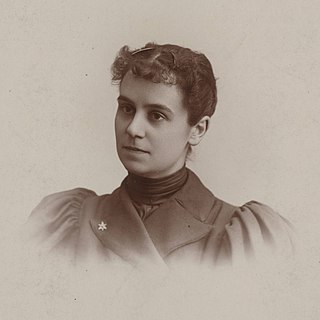
Cora Eliza Smith Eaton King was an American suffragist, physician and mountaineer. She was the first woman in North Dakota who was licensed to practice medicine.
Mitchell Hamline School of Law is a private law school in Saint Paul, Minnesota. It is accredited by the American Bar Association (ABA) and offers full- and part-time legal education for its Juris Doctor (J.D.) degree.

Women's suffrage in North Dakota began when North Dakota was still part of the Dakota Territory. During this time activists worked for women's suffrage, and in 1879, women gained the right to vote at school meetings. This was formalized in 1883 when the legislature passed a law where women would use separate ballots for their votes on school-related issues. When North Dakota was writing its state constitution, efforts were made to include equal suffrage for women, but women were only able to retain their right to vote for school issues. An abortive effort to provide equal suffrage happened in 1893, when the state legislature passed equal suffrage for women. However, the bill was "lost," never signed and eventually expunged from the record. Suffragists continued to hold conventions, raise awareness, and form organizations. The arrival of Sylvia Pankhurst in February 1912 stimulated the creation of more groups, including the statewide Votes for Women League. In 1914, there was a voter referendum on women's suffrage, but it did not pass. In 1917, limited suffrage bills for municipal and presidential suffrage were signed into law. On December 1, 1919, North Dakota became the twentieth state to ratify the Nineteenth Amendment.
References
- ↑ Weatherford, Doris (2012-01-20). Women in American Politics: History and Milestones. SAGE. ISBN 9781608710072.
- ↑ Interior, United States Department of the (1897). Official Register of the United States ... U.S. Government Printing Office.
- ↑ "Helen N. Hamilton (1874-1949)". Find a Grave.
- ↑ North western reporter. Second series. N.W. 2d. Cases argued and determined in the courts of Iowa, Michigan, Minnesota, Nebraska, North Dakota, South Dakota, Wisconsin. 1993.
- ↑ Bender, Leslie; Braveman, Daan (1995). Power, Privilege, and Law: A Civil Rights Reader. West Publishing Company. ISBN 9780314045775.
- ↑ "Women's Legal History" (PDF). Stanford University. 1997.
- ↑ Helen Hamilton upends American Bar Association convention in 1915. UND Today.
- ↑ "House Journal Day 53" (PDF). North Dakota Legislative Branch. 1999.